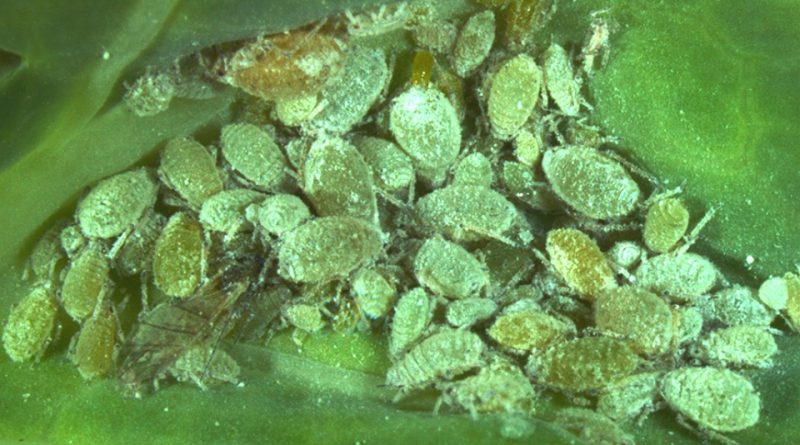Brevicoryne brassicae
Brevicoryne brassicae
The waxy aphid of the cabbage (Brevicoryne brassicae L.) is a Rincote Omottero belonging to the Aphididae family.
Systematics –
From a systematic point of view it belongs to the Eukaryota Domain, Kingdom Animalia, Eumetazoa Submarine, Bilateral Branch, Phylum Arthropoda, Subphylum Hexapoda, Insecta Class, Pterygota Subclass, Exopterygota Cohort, Subcoorte Neoptera, Paraneoptera Superorder, Rhynchotoidea Section, Rhynchota Order, Suborder Homoptera, Section Sternorrhyncha, Superfamily Aphidoidea, Family Aphididae and therefore to the Genus Brevicoryne and to the Specie B. brassicae.
Geographic Distribution and Habitat –
The Brevicoryne brassicae is an insect native to Europe that is now found in many other areas of the world, as it is adapted to both high and low temperatures so it can be present in habitats related to different climatic and ecological conditions.
Morphology –
The waxy aphid of cabbage is a greenish aphid covered by a white waxy powder that gives it a greyish-white to powdery blue appearance; the head is dark and has dark back and abdominal dorsal signs. The insect measures approximately 1.5-2.5 mm in length, depending on whether its shape is ather or winged.
Attitude and biological cycle –
The Brevicoryne brassicae sverna, generally, as a female virginopara; only in conditions of very low temperatures it winters as a durable egg, placed on the stem. Depending on the temperature, its cycle can be continuous throughout the year and reach 25-30 generations per year.
To limit its presence on the guests the containment and fight programs can be chemical and agronomic.
The agronomic struggle consists essentially in the destruction, after harvesting, of the cauliflower stems to limit the growth of the plant. The chemical fight, which is contained with the application of the agronomic measures indicated, can be carried out with treatments based on Pyrethrum or Pyrethroid Extract, taking into account the monitoring of the possible presence of its natural enemies and avoiding, with the chemical intervention, to destroy these populations. In the chemical fight it is also useful to resort to some insecticidal soaps that can be effective in the treatment of infestations from aphids without damaging its natural enemies.
Among the natural enemies of the waxy fauna of the cabbage we remember: the Miridae, the Crysopid Neuroptera, the Syraphid Diptera, the Coccinellida Coleoptera and the Afididae Hymenoptera. Furthermore, the resistance of the different cauliflower cultivars to the Brevicoryne brassicae must also be tested beforehand.
Ecological role –
The colonies of the Brevicoryne brassicae are located on the leaves, on the lower page, and the damage is caused by the trophic bites of the plant. The attached leaves show deformations and yellowing; in case of infestations to the young leaves of the shoot, the plant, as a whole, undergoes an arrest of the development. In the advance of the season, with the proliferation of generations, this Afide can attack, subsequently, the siliques that so dry up. Brevicoryne brassicae is a vector of the viruses responsible for the mosaic and black ring maculation. Furthermore, this aphid can often be found in association with M. persicae and L. erysimi on various host plants.
The waxy aphid of cabbage is a polyphagous species, it feeds on many varieties of products, including cabbage, broccoli (above all), Brussels sprouts, cauliflower and many other species of the genus Brassica. The Brevicoryne brassicae has not been found on plants outside the Brassicaceae family. This insect completely avoids plants other than those of the Brassicaceae family, so much so that they can breed other species together without them being attacked.
Guido Bissanti
Sources
– Wikipedia, the free encyclopedia.
– Russo G., 1976. Agricultural Entomology. Special Part. Liguori Editore, Naples.
– Tremblay E., 1997. Applied entomology. Liguori Editore, Naples.

